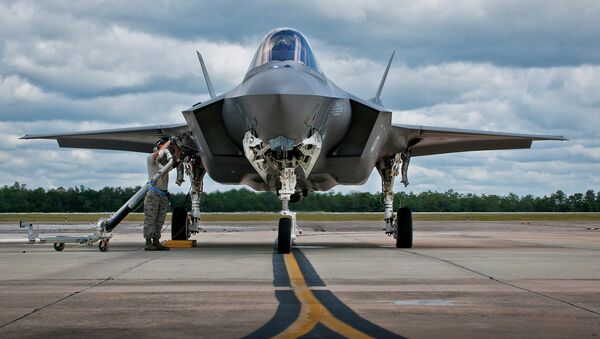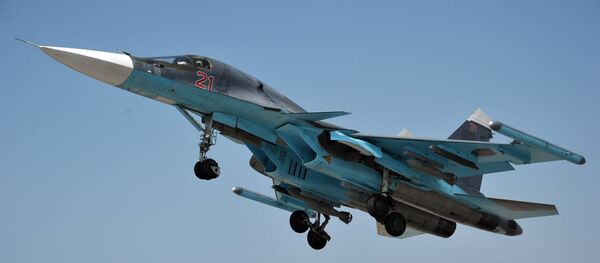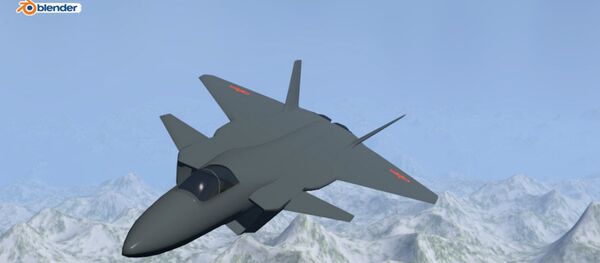As both the US' F-35 and Russia's T-50 programs are nearing completion, the militaries and defense industries of both countries are beginning to look into what could be the next generation of jet fighters.
While the F-35 had issues as a result of both computer problems and cost overruns, and the T-50 ran into delays as a result of engine issues, both countries are now looking at what the next generation of fighter jets could look like. Currently, Russia's Sukhoi plans to present a prototype in the 2020s, while the US' Boeing is planning a 2030 release date.
"If we stopped now, we would stop for good. Work on a sixth and, probably, a seventh-generation are underway. I don't have the authorization to say much more than that," the head of Russian Aerospace Forces Viktor Bondarev said earlier in March.
While Russia remains relatively secretive regarding the next-generation fighter jet, the US military industry has released several concept designs aimed at tenders. The most creative thus far has been by Britain's BAE Systems, which proposed a modular design, which would allow a UFO-like rhombus-shaped jet to separate into different functions while in mid-flight.
A concept by Northrop Grumman proposed a space plane which fires lasers, while Boeing has focused on the F/A-XX, which is aimed primarily at the US Navy's carrier fleet.
The main push from the US and Russian governments has been the ability to make fighters function as drones. At the press conference dedicated to Russia's future jet, Bondarev said that the plane would have both a manned and an unmanned version.
Bondarev then said that the shift to unmanned aircraft is in part because the human body "has limits," presumably for both long flights and extreme maneuvers. Drone equipment, he said, is "much more functional and low-maintenance," and "can withstand any g-force," referring to the human body's inability to survive plane maneuvers, leading to death or loss of consciousness.
"Can you imagine the possibilities that an unmanned fighter, bomber or attack aircraft has?" Bondarev said in early March.
US Secretary of the Navy Ray Mabus similarly said in 2015 that the Unmanned Carrier-Launched Airborne Surveillance and Strike (UCLASS) program could lead to the production of an entirely unmanned jet.
"What we’re looking at UCLASS is to be the bridge between manned systems and completely autonomous unmanned strike — which will be sometime in the 2020s — to develop that program using UCLASS to get us there," Mabus said then.
However, strike abilities could be put off for the UCLASS, as the US Department of Defense sees the aircraft's role primarily as an aerial refueling vehicle, while the US Congress wants a stealthy strike aircraft.
When it comes to learning from mistakes, the chief issue for the US has been whether to make a joint strike aircraft like the F-35, which would be largely similar, whether it is used for the Air Force, Navy or Marine Corps.
The F-35's greatest issue in that respect was that it essentially failed to come out as a joint service aircraft, as the interchangeability of parts was limited to 20 percent, less than the 70 percent expected in initial designs.
"You ought to think really hard about what you really need out of the sixth-generation fighter and how much overlap is there between what the Navy and the Air Force really need," Air Force Lt. Gen. Christopher Bogdan said Thursday, cited by DefenseOne.
In Russia, all ground forces' aviation was transferred into the Air Force in the 1990s, and only one aircraft cruiser is currently operational. The Admiral Kuznetsov is expected to undergo modernization later in 2016, but not until it goes on a tour of duty in the Mediterranean, which may include testing out operational capabilities off the coast of Syria.
Another issue with Russia's T-50 project has been in coordinating the program with India, which has been unhappy with the cost and has leaked complaints about the project to the press in the midst of the country's stalled deal to buy Rafale jets from France.
When it comes to the new Project 23000 "Storm" aircraft carrier, much of the concept is still in the works, although the Russian Navy's armaments chief previously said that the development of a carrier-based T-50 is planned, which may rule out the development of a sixth-generation inter-service fighter jet.





